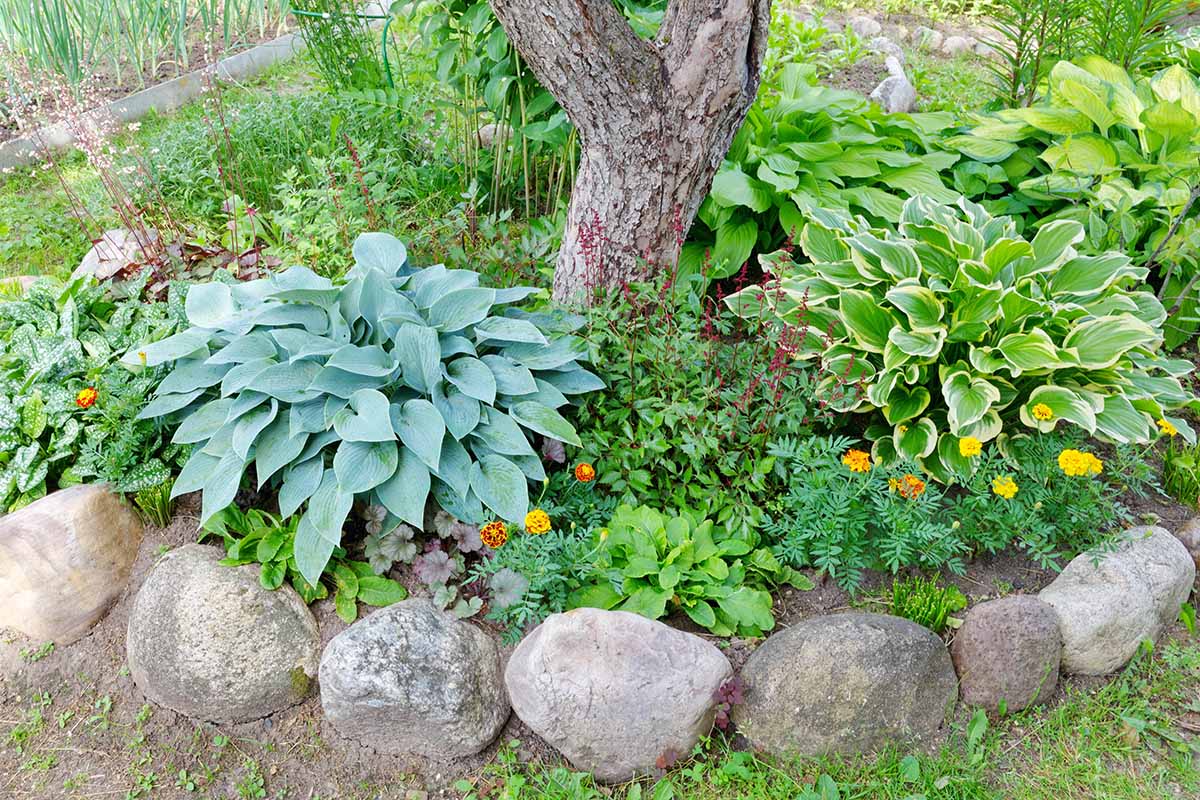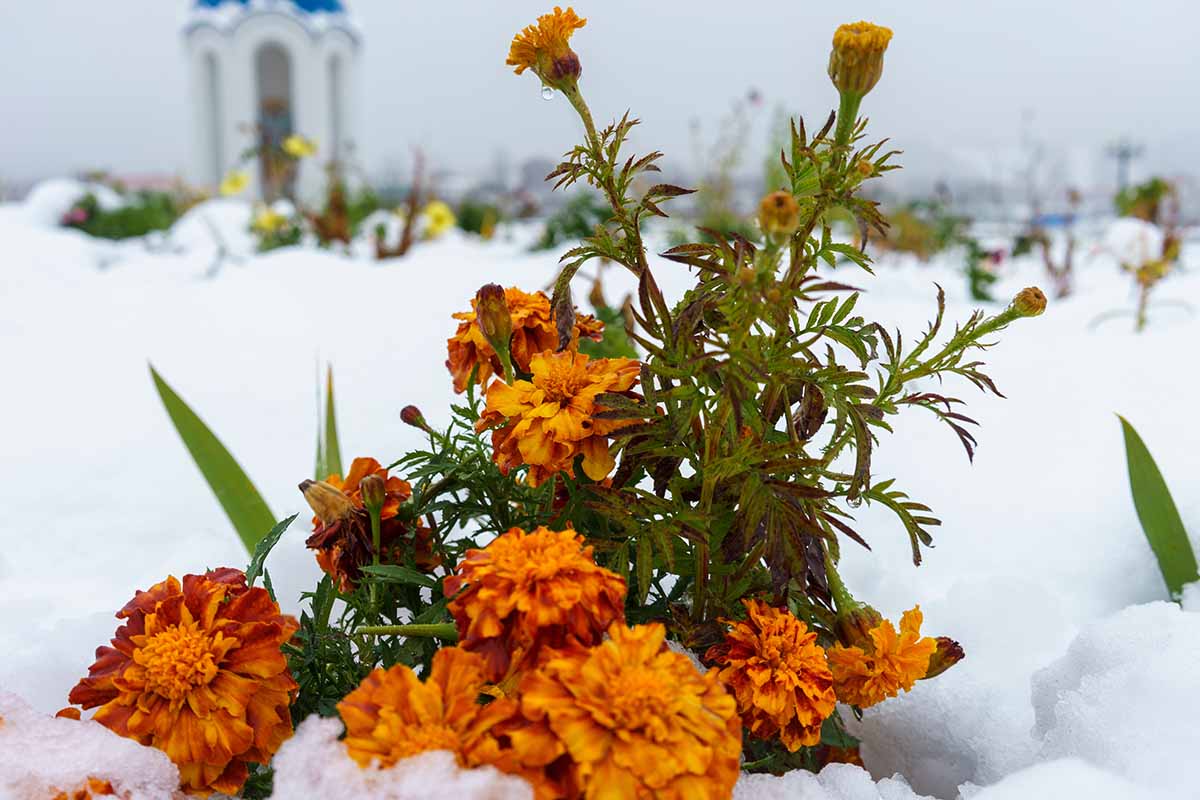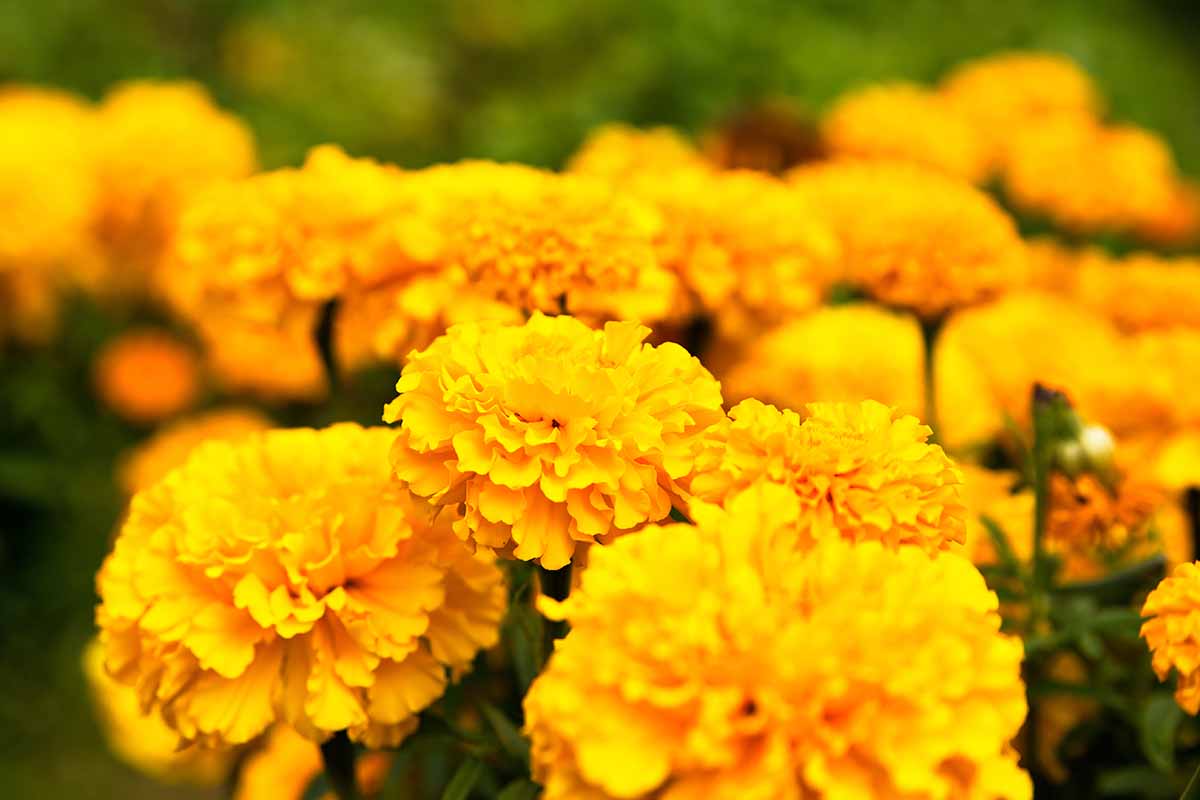Marigolds are pretty, but part of their appeal is that they bloom every week without much or any help from you.
Most of the time, you can bury them and go about your business. They’ll still be out there doing their thing.
We link to vendors to help you find relevant products. If you buy from one of our links, we may earn a commission.
You may have planted your new seedlings in the garden, but they didn’t bloom the way you were hoping they would.
Or perhaps your plants were blooming away but now they’ve stopped. Whatever the circumstance, your Tagetes just aren’t blooming.
Fear not, my fellow marigold lovers. Your plants want to bloom. They just need a little extra support.
To help you figure out what’s wrong and how to fix it, let’s talk about the following:
Marigolds are one of the most popular garden flowers, known for their bright, cheerful blooms that come in shades of yellow, orange, red and more. These hardy annuals are easy to grow and do well even in poor soil conditions. So when your marigolds fail to produce their signature blossoms, it can be frustrating and confusing.
In this article, we’ll examine the 5 most common reasons marigolds don’t bloom and provide actionable solutions to get your plants flowering again
1. Insufficient Sunlight
Marigolds are sun-loving plants that need at least 6 hours of direct sunlight per day. Lack of adequate sunlight is the number one cause of no flowers on marigolds. Without enough light exposure, the plants focus their energy on foliage growth rather than flowering.
Solution Move marigolds to a sunny location. South or west-facing spots that receive sunlight for most of the day are ideal. If space is limited, opt for dwarf or compact marigold varieties that can thrive in containers placed in full sun.
2. Overwatering
While marigolds are drought-tolerant, excess moisture can spell trouble. Soggy soil due to overwatering inhibits root respiration and causes root rot. This stresses the plant, directing energy away from flowering.
Solution: Allow the soil to partially dry out between waterings. Test with your finger; if the top 1-2 inches are dry, it’s time to water. Improve drainage by amending dense soil with compost or perlite.
3. Lack of Deadheading
Deadheading or pruning spent blooms stimulates new flower production. When you don’t remove old flowers, the plants continue directing energy into seed production instead of making new blossoms.
Solution: Deadhead regularly by snipping off old blooms just above a set of healthy leaves using pruners. Don’t wait for flowers to wilt completely before removing them. Consistent deadheading prolongs the flowering period.
4. Pests or Diseases
Insects like aphids, thrips and mites weaken marigolds by sucking plant juices. Downy mildew and other fungal diseases also take a toll on plant vigor and affect flowering.
Solution: Check for signs of pests like honeydew, webbing or yellow speckling on leaves. Look for fungal issues like white powdery patches. Control with neem oil or insecticidal soap sprays. Improve air circulation and avoid overhead watering to prevent disease.
5. Excessive Heat
If temps rise above 90°F, marigold flowering may decline or stop altogether. Heat stress causes the plants to focus energy on survival rather than blooming.
Solution: Provide afternoon shade for marigolds in hot climates. Dappled shade from nearby trees or shrubs is ideal. You can also use shade cloth, umbrellas or shade structures to protect plants during peak heat. Proper watering and mulching helps buffer plants too.
While troubleshooting lack of flowers, also watch for signs of under fertilizing like yellow lower leaves and stunted plants. Marigolds are light feeders but benefit from occasional fertilizer. Another tip is pinching plants when young to promote bushiness and more blooms later on.
With the right growing conditions, marigolds will reward you with non-stop color. Pay attention to sunlight, moisture, pruning, pests and other cultural factors. A few simple adjustments can get your plants back on track to flowering, so you can enjoy these classic garden performers.
Not Enough Sunlight
Marigolds can’t get enough sunlight. All-day sun, from morning to evening, and they’re perfectly happy.
Don’t be tempted to place them somewhere shady.
A little won’t hurt, but flowers probably won’t grow if they don’t get at least six hours of sun a day. If you do, they’ll be dramatically smaller and you’ll have fewer than you would otherwise.

It’s important to remember that even if you put your marigolds in the perfect sunny spot in the spring, things may have changed since then.
Maybe a tree leafed out that hadn’t been in all its full-foliaged glory when you planted. Or a fast-growing vine wound its way around a nearby fence and blocked some light.
Take a day to observe your plants and see how much sun they’re actually receiving.
If marigolds in one part of the garden are blooming well but not in others, this is likely because they are not getting enough light.
You might need to either move them (which is fine, they don’t mind being moved) or prune them.
Even though pests don’t usually cause a lot of trouble, aphids and spider mites can hurt plants so much that they stop blooming or have sad, small flowers when they do.
Look for tell-tale webbing, or ants, and look a little more closely for the little pests themselves.

Click on our spider mites guide to learn how to get rid of spider mites if you see webbing or the tiny spiders that make it.
If, on the other hand, you see ants, honeydew, or small, oval-shaped bugs on the stems and undersides of the leaves, read our guide to aphids.
Marigolds usually bloom from late spring to fall, so if you don’t see any blooms during this time, you might think you should. But keep in mind that not all species bloom for this long.

Signet and French marigolds should bloom about eight weeks after you plant the seeds, while African marigolds bloom later in the season.
If you planted transplants, they should start blooming just as soon as temperatures start to increase. If you have a particularly cool spring, expect the blossoms to be delayed.
Your plants will stop blooming once the first frost arrives.
Why Marigolds Fail to Bloom
For the most part, marigolds are marvelously resistant to pests and diseases.
They can even handle poor soil and some drought. But sometimes even marigolds are overwhelmed to the point where they can’t produce a floral display.
Here are the most common causes and what to do about them:
Powdery mildew is just about the only disease that comes calling on marigolds with any regularity. Most of the time it won’t reduce blossoming, but a bad enough infection might.
If you look closely at the leaves, you’ll notice yellowing leaves and gray or white mold.
If most of the leaves have mildew on them, it seems likely that this is what’s stopping the flowers from growing. Read up on identifying and dealing with powdery mildew in our guide.
During the hottest days of summer, French (Tagetes patula) and signet marigolds (T. tenuifolia) will sometimes stop blooming.
They’ll resume once the temperatures drop a little. African types (T. erecta) can tolerate more heat and usually continue blooming all summer long.
If it’s really hot where you live, you can help the plants stay in bloom by giving them more water, adding mulch, or putting shade cloth over them during the hottest parts of the day.
If you don’t want to go to all that trouble, just be patient. Your flowers will return when the weather cools.
5 Reasons – Why Marigold Not Flowering?
FAQ
What do overwatered marigolds look like?
How long does it take for marigolds to flower?
- The Ultimate Guide to Growing Strawberries in Raised Beds - August 8, 2025
- No-Dig Garden Beds: The Easiest Way to Grow a Beautiful Garden - August 6, 2025
- How to Protect and Preserve Wood for Raised Garden Beds - August 6, 2025

